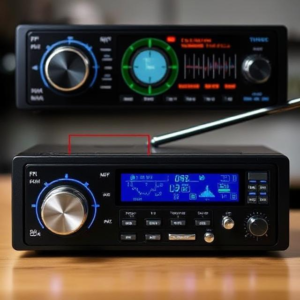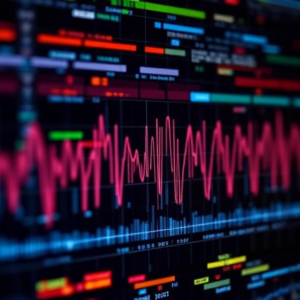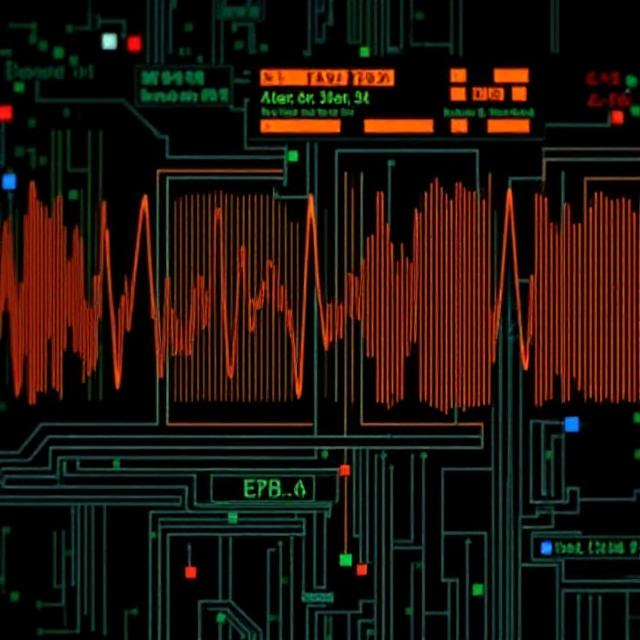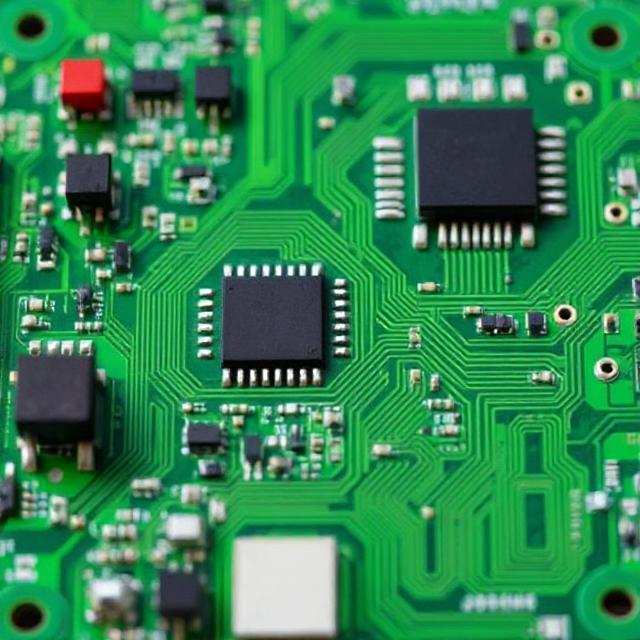1. What is Tuning in Radio Systems?
When you listen to a radio station, you’re selecting a particular frequency (like 101.5 MHz for a music station) to hear the broadcast. This is called tuning.
- Traditional Tuning: In older radios, tuning was done using a dial or knob to manually adjust the frequency. You would physically turn a dial to get the radio to tune into the correct frequency for the station you wanted.
- Digital Tuning: In modern radios, especially in digital or FM/AM digital radios, tuning is done digitally through a microcontroller or digital signal processor (DSP), which is much faster and more accurate.

2. How Does Digital Tuning Work?
Digital tuning uses electronic circuits and software to automatically select the right frequency, instead of relying on a mechanical dial. It’s like a computerized version of tuning.
Here’s a simplified process of how digital tuning works:
a. Digital Signal Processing (DSP):
- Digital radios use a Digital Signal Processor (DSP) to process the radio signals. The DSP handles the tuning by converting analog signals (like radio waves) into digital signals, then processing them to extract the audio you want to listen to.
b. Tuning with Numbers:
- With digital tuning, the frequency you’re selecting is usually displayed as numbers (e.g., 101.5 MHz for FM radio). The radio’s tuner adjusts to the exact frequency by sending a digital command to the radio’s hardware, which tunes the radio to the correct channel.
c. Automatic or Manual Digital Tuning:
- You can either manually enter the frequency (using buttons or a touch screen) or let the radio automatically find stations by scanning through frequencies.
- Automatic Tuning: When you press a button for auto-scan, the radio will scan through the frequencies and automatically find available stations and store them.
- Manual Tuning: You can also manually adjust the frequency by using the radio’s controls, but instead of turning a dial, you can press buttons or rotate a knob that adjusts the number value of the frequency.
3. Advantages of Digital Tuning Over Analog Tuning
Digital tuning has a number of benefits over traditional, manual (analog) tuning:
a. Accuracy:
- Digital tuning is much more accurate than analog tuning. In traditional radios, you might have to turn the dial back and forth to fine-tune to the right station. With digital tuning, the radio can lock onto the frequency precisely, so you always get the right station.
b. Faster Tuning:
- Digital tuning is faster. The radio can quickly search through the frequencies and find the station you’re looking for, whereas with analog tuning, you might have to do some manual adjustments.
c. Storage of Presets:
- Digital radios can store preset stations in memory. This means you can save your favorite stations (like 101.5 FM or 92.7 FM) with one button press, and easily switch between them without having to manually adjust the frequency each time.
d. Better Sound Quality:
- Digital tuning can often result in better sound quality because the system can more easily lock onto a signal without interference, whereas analog tuning can sometimes have static or distortion if you’re not tuned in exactly right.
e. Additional Features:
- Digital radios can include additional features like RDS (Radio Data System), which displays information such as the station’s name, song titles, or traffic updates while listening to FM radio. This would be harder to implement in traditional analog tuning radios.
4. How Does the Radio “Know” the Frequency?
The radio uses a local oscillator and a tuner circuit to generate and filter radio frequencies. Here’s how it works step-by-step:
- The local oscillator generates a frequency that’s compared with the incoming radio signal. The difference between the two frequencies is known as the intermediate frequency (IF).
- This IF signal is processed by the radio’s DSP, which helps convert it into a readable sound signal.
- Digital Tuning involves using a microcontroller or DSP that controls how the local oscillator and tuner are set, essentially “programming” the radio to select a specific frequency.
5. Different Types of Digital Tuning in Radio Systems
Digital tuning can be used in various types of radios and communication systems. Here are a few examples:
a. FM/AM Radios:
- Many modern FM and AM radios use digital tuning to allow you to select stations. The radio scans through the available frequencies and locks onto the signal for clear sound.
b. Internet Radios:
- Some radios connect to the internet to stream online stations. Digital tuning can be used to select internet radio stations by searching for the station’s name or frequency online, just like you would on a traditional radio.
c. Digital Radios (DAB/DAB+):
- Digital Audio Broadcasting (DAB) radios use digital signals to transmit audio. With DAB, there’s no need for tuning to specific frequencies because the radio automatically locks onto available channels digitally. This allows for clearer sound and more stations without the static issues common with analog radio.
d. Software-Defined Radios (SDR):
- In some cases, even software-defined radios (SDR) use digital tuning techniques. SDRs use software on a computer or embedded system to select and tune to frequencies, offering incredible flexibility and adaptability.
6. Digital Tuning in Action: Example of Listening to a Radio Station
Let’s say you want to listen to a station at 101.5 MHz on a digital radio. Here’s what happens step-by-step:
- You press a button or touch the screen to enter 101.5 MHz on your radio.
- The microcontroller inside the radio sends a digital signal to the tuner to adjust to that frequency.
- The radio’s DSP processes the signal, locks onto 101.5 MHz, and converts it into sound.
- You hear the audio from the station, and the display shows 101.5 MHz or the station’s name, depending on the radio.
If you press the auto-scan button, the radio will automatically search for all available stations, and you can then select from a list or store them as presets.
7. Conclusion
To sum it up:
- Digital tuning in radio systems uses electronic circuits and software to automatically or manually select a frequency, replacing the traditional dial or knob.
- It is faster, more accurate, and offers features like preset storage and better sound quality.
- Digital tuning works by using a microcontroller or digital signal processor (DSP) to process signals and help the radio lock onto the correct frequency.
- It’s used in many types of radios, including FM/AM, digital radio (DAB/DAB+), and internet radios.











